#precolonial Philippines
Explore tagged Tumblr posts
Text
In 11th, century BC. My Precolonial Filipino ancestors discovers A giant reptilian monster who collapse and dies in Philippines :

#kong vs godzilla#godzilla x kong the new empire#Godzilla#That Godzilla specimen was Dagon#Precolonial#Precolonial Philippines
31 notes
·
View notes
Text

Precolonial Philippines (Visayas Region) - Hatsune Miku
Late to the trend and not 100% accurate in terms of the clothing (still researching on them), but something fun to do outside the main projects.
Timelapse
431 notes
·
View notes
Text
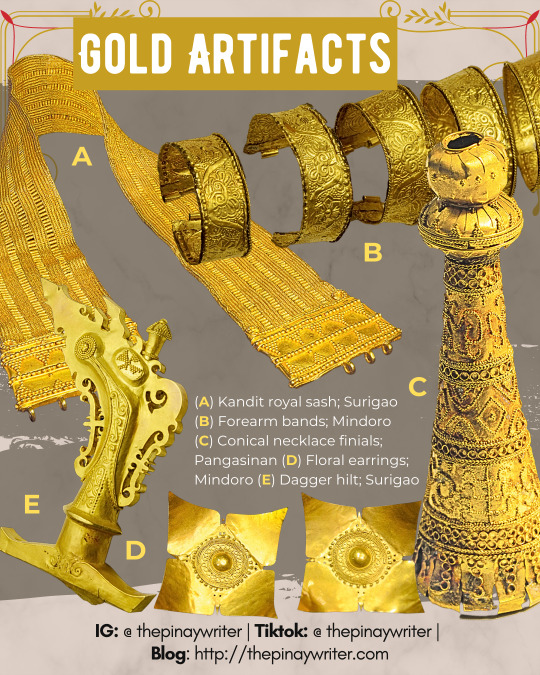

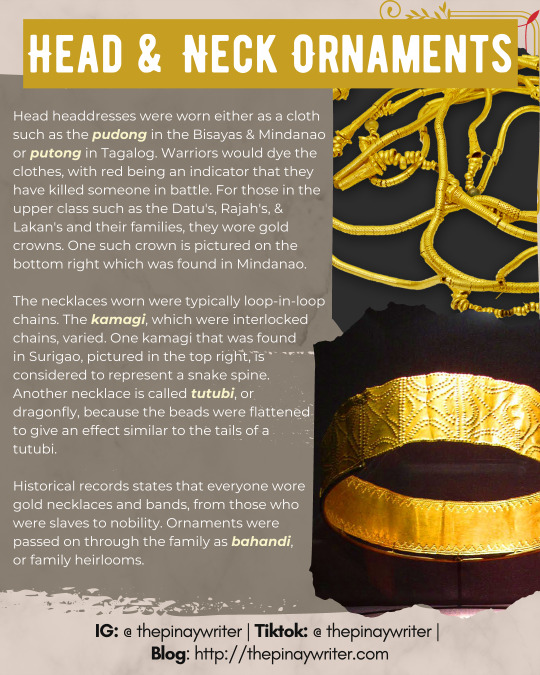
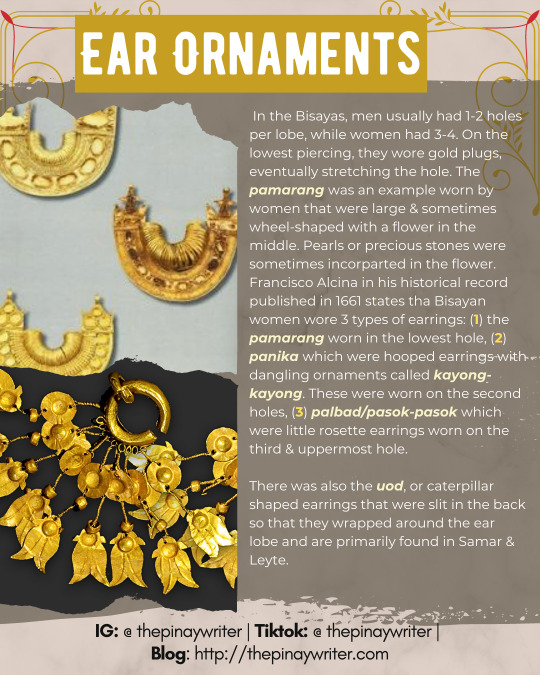

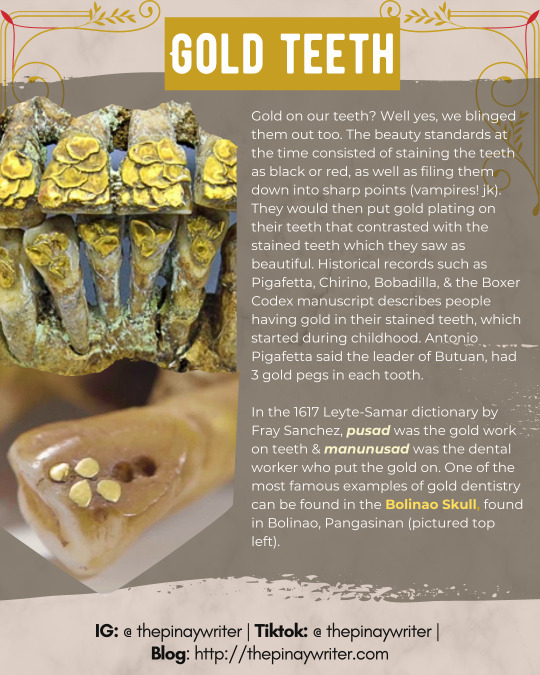

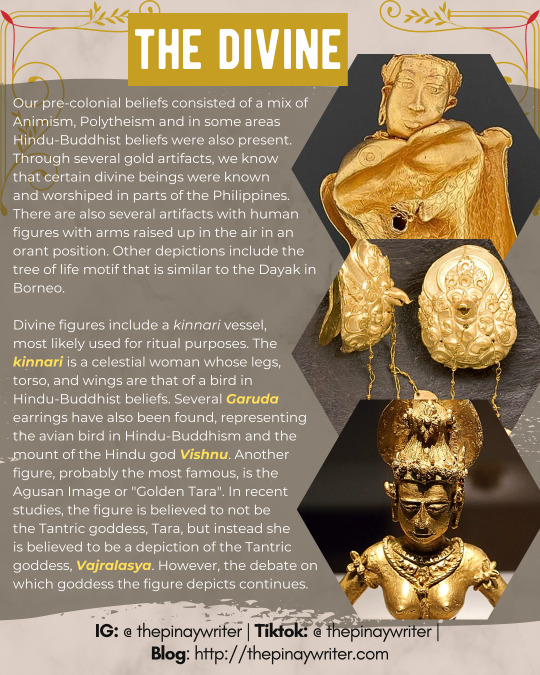
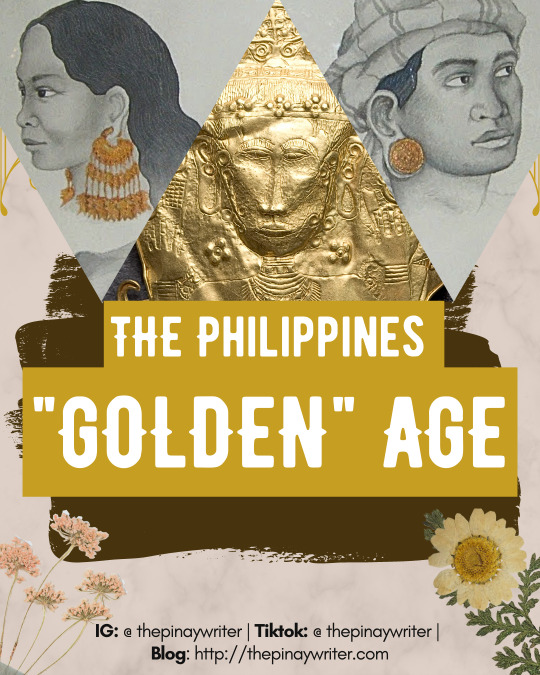
✨️ Our ancestors before the Spaniards arrived wore gold and passed them down through the generations, regardless of social class. They even crafted bowls, liquid vessels, and the hilts and covers of daggers and swords out of gold.
They buried these ornaments with the dead so that they could use it in the afterlife and as a token to give the spirit or deity to leave purgatory. They also covered the faces of the dead with gold death masks to protect them from evil spirits entering the body.
Numerous Spanish accounts record that they wore gold and buried their dead with gold bahandi, or heirlooms. From Antonio Pigafetta, Francisco Alcina, Pedro Chirino, Friar Bobadilla and within the Boxer Codex Manuscript. Together with historical accounts, archeological finds of gold artifacts from Luzon, the Bisayas, and Mindanao show how much our pre-colonial ancestors wore and used gold in their clothing, divine figures, and everyday wear, similar to the rest of Southeast Asia.
To see many of these artifacts, check out the gold exhibit in the National Museum of the Philippines and Ayala Museum.
#filipino#philippines#precolonial Philippines#gold#artifact#history#culture#filipino culture#pinoy#filipino mythology#archaeology
1K notes
·
View notes
Text

Mari Datuin x Filipino precolonial beliefs in the nature of the Soul x Silly Third thing meme

#mari datuin#other mari#hi nay podcast#hinaypod#horror podcast#audio drama#precolonial philippines#filipino culture
25 notes
·
View notes
Text

pre-colononial visayan miku because... because BECAUSE
#hatsune miku#miku#miku vocaloid#pinoy#hatsune miku fanart#artfum#hatsune miku art#vocaloid#precolonial philippines
297 notes
·
View notes
Text

4 notes
·
View notes
Text
These guys are on the cast of a philippine period soap opera called Amaya (2011-2012), and the show's historical costuming is absolutely off the chain!


This is Marian Rivera as the title Character Amaya. The pre-colonial time period coincides with the late medieval/renaissance and the series concludes with the arrival of Ferdinand Magellan, where he would later be killed on the island of Mactan (east of Cebu) in 1521, and one of his two remaining ships (started with 5) would go on to complete the circumnavigation of the globe.

Just look at them!



#traditional costume#precolonial philippines#precolonial fashion#costuming#historical costuming#amaya
331 notes
·
View notes
Text

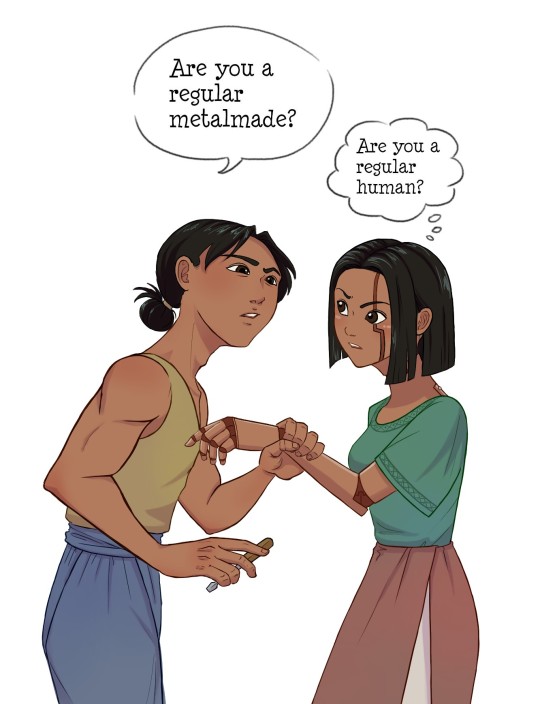
A couple of sketches from my novella, Metalmade. I meant to post this back in February for the 2nd-year anniversary of its launch, but I got sick and didn't have the energy to finish it until now.
It's about a sentient robot that gets tasked to spy on a taho-peddler to determine if he's actually an aswang in disguise, but despite her best efforts, she gets quite befuddled by him. That conversation they're having in the 2nd pic was so much fun to write.
Actually this whole novella was so much fun to write, and I have quite a few ideas for Yaya and Digan's adventures in Sagabilang, so a possible sequel is not off the table!
#ocs#original character#original work#filipino#precolonial philippines#fantasy#metalmade#my big orig#artph#digital art
96 notes
·
View notes
Text

From Museum × Stories at Museo Iloilo:
In the 14th and 15th centuries, pre-colonial Filipinos practiced secondary burials, a fascinating ritual where the bones of the deceased were carefully cleaned and placed in coffins made of hardwood. Archaeological discoveries in caves across Western Visayas reveal that these burials were often preceded by elaborate rites. The presence of deformed skulls in many coffins suggests that cranial modification may have played a role in these practices.
One remarkable find was a burial containing a skeleton adorned with gold eye and nose ornaments, declared a National Cultural Treasure. Called the Oton Gold Death Mask is now displayed at National Museum Western Visayas right beside Museo Iloilo. Alongside the burial, 15th-century Chinese, Siamese, and Annamese porcelain were unearthed, highlighting the region's thriving trade connections during that era.
Also in the town of Oton, other burials revealed a wealth of artifacts, including trade ceramics, locally made pottery, iron tools, beads, and semi-precious stones. Additional discoveries included glass and shell bracelets, earthen net weights, spindle whorls, and teeth decorated with gold pegs—symbols of status and wealth. These finds provide a window into the vibrant cultural and trade networks of pre-colonial Panay.
#philippines#visayas#southeast asia#anthropology#archeology#asian history#iloilo#precolonial#precolonial philippines#precolonial visayas#x
18 notes
·
View notes
Text
Historical inspiration for my fantasy novel: Pre-colonial Philippines
Seeker of the Lost Song is a historically-inspired fantasy novel merging medieval Finnish & pre-colonial Filipino elements, and I wanted to share two elements of Filipino history I included.
☼ 1) Dulang, a low table ☼
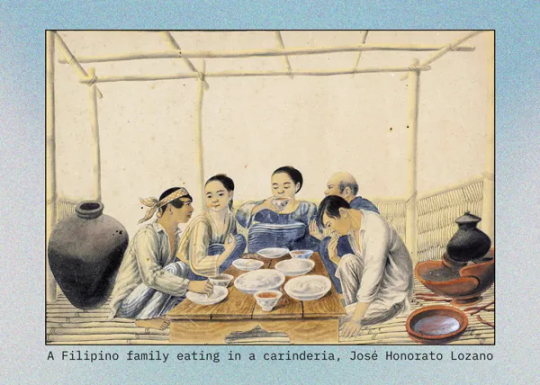
One of my favourite tidbits from my research is that pre-colonial Filipinos ate at a low table, sitting on the floor. Part of me worries that readers will think “Hey you stole that from Japan!” but I’m excited for the chance to show my people at their own low table, eating rice with their hands.
☼ 2) The balangay boat ��
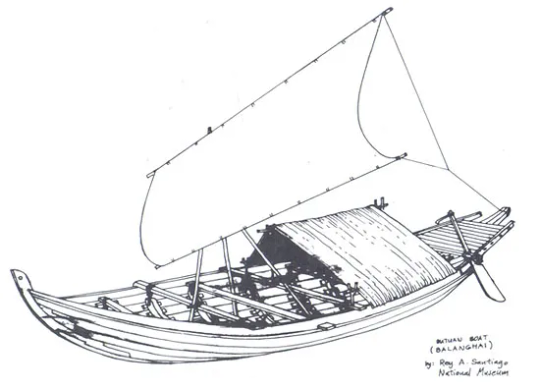
Another pre-colonial Filipino element I included in the book was a balangay, an ancient Filipino boat that’s recently come back into the public consciousness, with ancient boats being excavated and working replicas made. A quote from this article in STARweek, from one of the people who worked to rebuild the balangay, really resonated with me:
“It is very sad because we are a maritime people. We should be gifted and natural in the waters but colonialization robbed us of that consciousness. I am doing this to help rekindle that spirit”
The balangay that appears in my novel has a double outrigger (something that always feels so Filipino to me), but essentially it’s a larger version of the sketch pictured. And I have to admit, the scenes on the balangay did stir something in me. Something ancient and ancestral, perhaps?
Seeker’s as-yet-unnamed sequel also features elements of pre-colonial Filipino history, but more on that at another time. Suffice it to say I’m enjoying this opportunity to learn more about the history of my people and use it in a fantasy setting!
#amwriting#fantasy novel#seeker of the lost song#filipino history#canadian author#asian authors#southeast asia#precolonial philippines#asian fantasy#filipino fantasy
23 notes
·
View notes
Text
Pre-Colonial Tagalog Nobleman Early 15th Century Philippines.
I read a bit about Jean-Paul Potet's book regarding Filipino fashion and it opened my eyes on the major differences Tagalog Men wore compared to the usual depiction of Precolonial Fashion that mostly borrows from Visayan depictions.

Particularly how Tagalog often wore their hair short and sometimes still utilize the Bahag. And used feather plumes as ornaments to their putongs. Hence, I decided to draw how I imagined them in my bead based on the description.
Just so you know I'm still learning how to incorporate backgrounds so if the background seems a bit off-puting I'm still learning the basics.
7 notes
·
View notes
Note
Do you know anything about pre-colonial ilokano culture? Like any practices, myths etc :)
Precolonial Ilokano culture has also been on my radar especially since I myself am of Ilokano descent actually! My ties to the culture had been severed by my Ilokano grandfather after a falling out with his family, but I might be able to get together some sources and articles on precolonial Ilocos some other time.
One of the most popular myths from the Ilokos region that is often taught in schools even outside the area is the Life of Lam-Ang or Biag ni Lam-Ang. This story follows Lam-Ang and different parts of his life from before his birth and up to his peaceful life after all of his adventures. You can read it here alongside a collection of other epics from other Filipino ethnic groups and an English translation here (thanks to a Christian school's English class lol)
From quick research, an article by Jordan Clark of the Aswang Project lists the 1978 book Handbook of Philippine Language Groups as source for knowing the early Ilokano pantheon or at least the generally accepted Ilokano pantheon.
This book identifies Buni as the supreme being of the pantheon, who, from other sources I've seen, is often referenced as someone who has tasked the giants with creation. I can't seem to find the specific myth that exactly references how the world had come to be. Parsua was also identified as a creation deity.
Then there are the deities related to different nature-related and weather-related things which are listed as Apo Langit (Lord Heaven), Apo Angin (Lord Wind), Apo Init (Lord Sun), and Apo Tudo (Lord Rain).
There are also variations listed within the article that had been referenced to have come from the book published in 1952 called the Historical and Cultural Data of Provinces specifically from Vigan, Ilocos Sur, although it seems to have more outsider influence.
Here's the plain-text from the article since it's pretty difficult to find other sources of this myth other than the book and the article:
Cabalangegan was formerly a jungle at the edge of the river Abra. On the far side of the river were mountains high and steep. On these mountains lived an old man named Abra, the father of Caburayan. The old man lived and controlled the weather. It is said that the river Abra was a gathering of water vapor, shaded, and the days were always bright with sunlight. At that time Anianihan, God of Harvests, was in love with Anianihan, Goddess of Healing. Her mother, Lady Makiling knew about their mutual understanding, but Abra did not know it for the three were afraid to tell him since he might punish them as he disapproved of Anianihan. Abra wanted his daughter to marry either Saguday, God of the Wind, or Revenador, God of Thunder and Lightning. This being so, Anianihan took Caburayan from her home. Abra wept a great deal. He sent Lady Makiling away after beating her. When Abra was alone, he wept day and night till Bulan, God of Peace and Calm, came. But though Bulan was there to brighten Abra’s spirits, Abra did not stop weeping. He could not express his anger. He begged the other gods to bring back his daughter. One day the sun, eye of Amman, shone so bright that the water of the river Abra was excessively heated. Smoke rose from the river. Soon, thick, black clouds began to darken the sky. Then Saguday sent the strongest wind until the crowns of the trees brushed the ground. The god Revenador sent down the largest strings of fire. The heaviest of rains fell. All these frightful events lasted seven days. The river Abra then rose and covered the trees. There rose a vast body of water and the highest part of the mountain could be seen. It looked like the back of a turtle from a distance. At this spot Abra lived. On the seventh day, Abra heard a cry. He also heard a most sorrowful song. Abra dried his tears and looked around, but he saw no one. He determined to find Maria Makiling, his grandchild. He did not find her for the cries of the baby had stopped. The search for the baby lasted three full moons, but to no avail and the poor old man returned to his home very sad. He lost all hope. His wits were gone. At that time Maria Makiling was under the care of the fierce dog Lobo, that was under a god of the Underworld. He had been punished by the other gods and that is why he looked like a fierce dog. He was sent down to do charity.
From just the story alone, there's some obvious influences from other cultures such as one of the deities mentioned, Lady Makiling, the mother of Caburayan, having come from Laguna, as well as the usage of the word Lobo to name a fierce dog with the word having come from Spanish.
This may be the reason why this myth isn't regarded as highly as a more authentic version of the precolonial Ilocano pantheon although it is an interesting story still.
I do want to learn more about Ilocano precolonial culture too but that's all I have for now! Hopefully it's informative enough especially since finding sources outside the Aswang Project website is rather difficult.
#mayaqna#mayapino#runin-reads#ilocos#ilocano culture#ilocano mythology#philippines#filipino culture#filipino mythology#precolonial philippines#long post
36 notes
·
View notes
Text

A Filipino demigod npc for a dnd campaign!
#step on me#dnd commission#dnd character#commissions#dnd art#bg3 art#dnd5e#precolonial philippines#philippines#indigenous
2 notes
·
View notes
Text








✨️📸🇵🇭 Celebrating and honoring our culture and the ancestors through cultural heritage photoshoots.
Here are some photos from a photoshoot I did in the San Francisco Botanical Gardens with a client of mine, Jacqueline, back in November. Together, we honored her Tagalog ancestors by doing a pre-colonial look.
I chose to use this location, as there are several balete trees in the gardens. The balete tree is steeped in Filipino folklore and beliefs, across the islands and different ethnic groups.
During my photoshoots, I tell my clients to bring an atang, a food offering, for their ancestors. For Jacqueline, she gave the offering underneath the balete tree, a perfect place to give them, as the balete tree is believed to be the home of the spirits, and was the place where the katalonan (the term for the Tagalog priestess) would go to do their maganito, (rituals).
For one of the photos, we decided to try and recreate one of the poses of an illustration of a Tagalog woman in the Boxer Codex manuscript.
➡️ Interested in following my work? Follow me on Facebook and on Instagram (@ thepinayphotographer)
✨️Interested in booking a session? Visit my website and fill out my form. Check below for my booking dates.
https://thepinayphotographer.mypixieset.com/contact/
✨️BOOKING DATES!✨️
Jan 10-February 13: NYC
February 24-26: Las Vegas
March 14-16: San Francisco/Daly City/Bay Area
March 19-21: Los Angeles
April 4-6: Chicago
April 11-19: NYC
April 27-28: Boston
May 1-19: NYC
May 23-25: Washington D.C.
#filipino#philippines#precolonial philippines#decolonization#filipino history#filipino culture#photography#photographer#filipino heritage#tagalog#boxer codex
197 notes
·
View notes
Text
Anybody know of any tumblr blogs dedicated to precolonial philippine dress and historical patterning? I want to make something for my mahal but I'm not finding much info.
#historical costuming#pre colonial philippines#precolonial philippines#precolonial fashion#traditional costume
68K notes
·
View notes
Text
Grade 9 || QUARTER 1 : Proverbs
0 notes